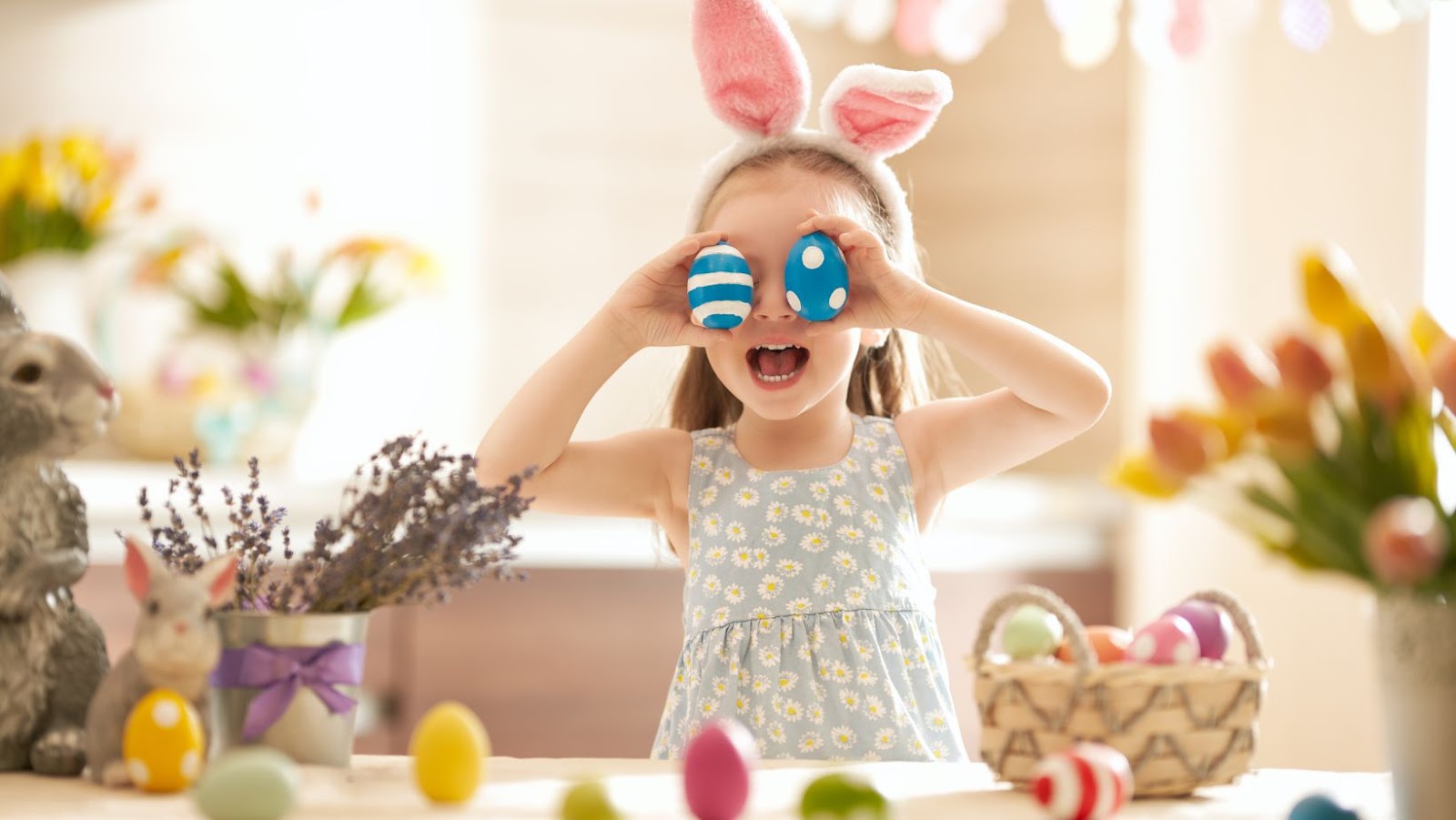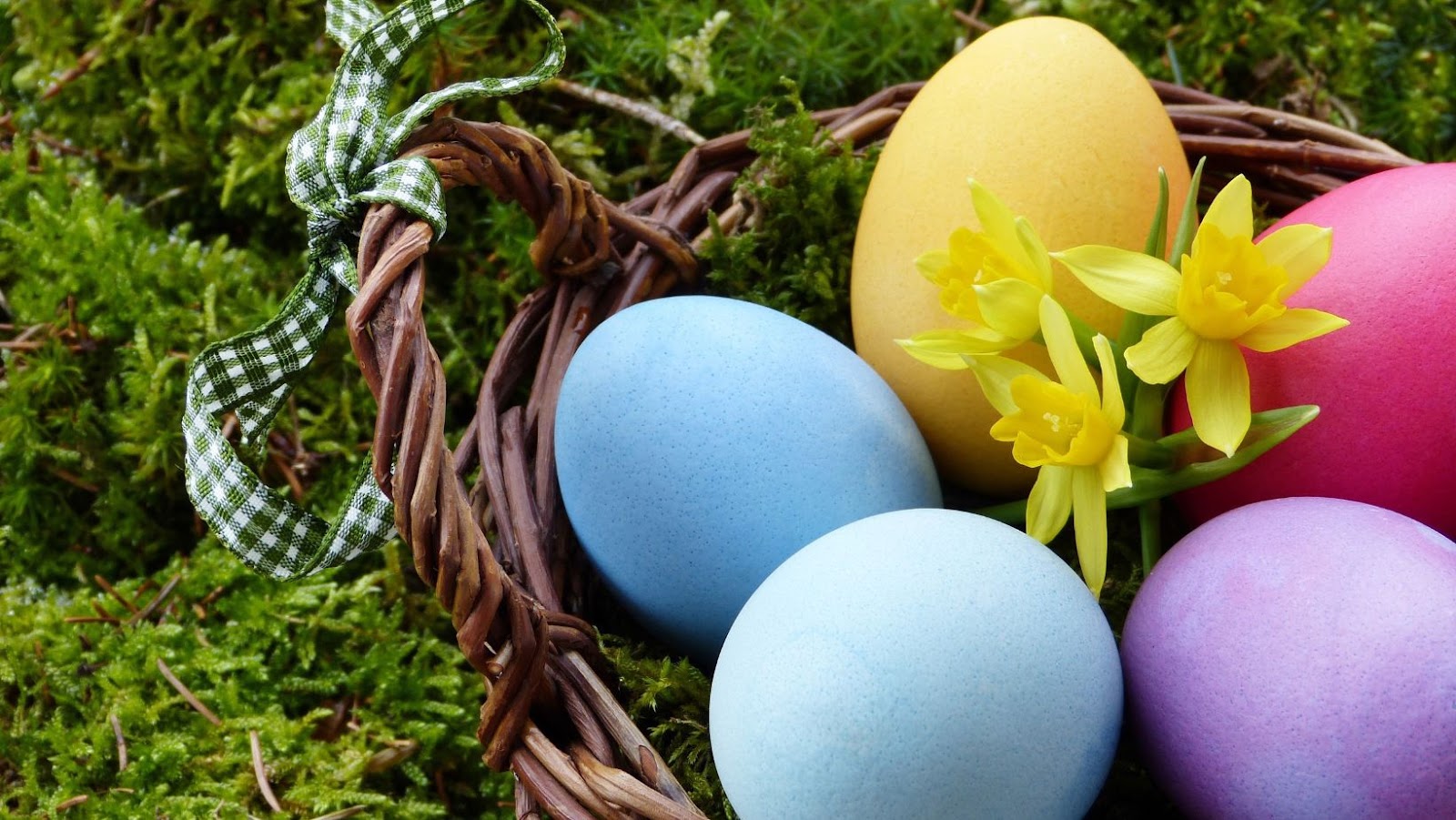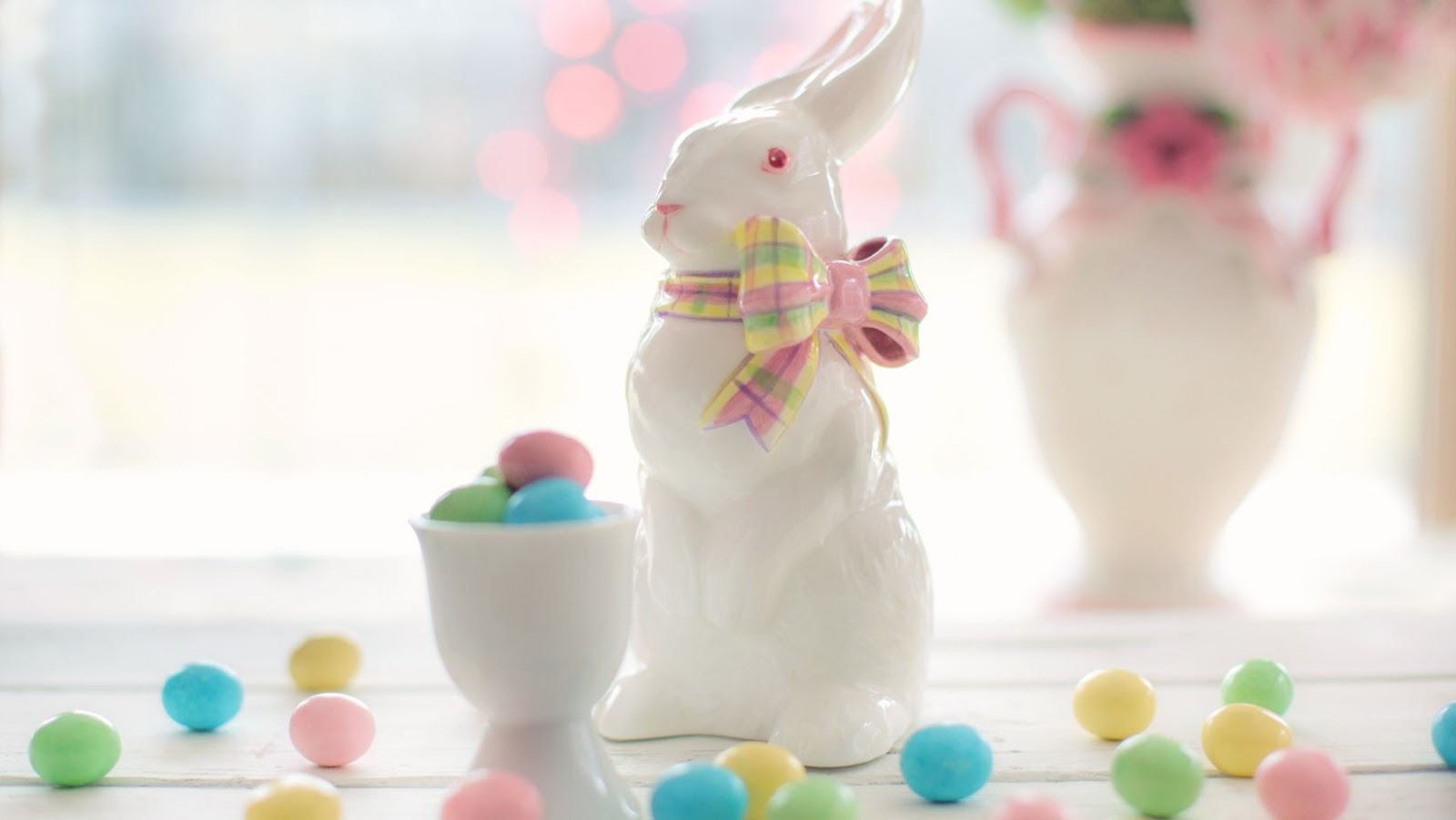All About Easter Day: Why is it Celebrated

Easter Day is an important cultural and religious holiday celebrated by Christians around the world. While there is no consensus on the exact date of Easter, it usually falls between March 22nd and April 25th, with the dates changing from year to year.
Easter Day is a celebration to honor the resurrection of Jesus from the dead and is one of the most widely celebrated holidays of the Christian faith.
Let’s take a deeper look into the history and the celebration of Easter Day.
What is Easter Day Celebration
Easter Day is one of the most important holidays in the Christian liturgical year, celebrating the resurrection of Jesus Christ three days after his crucifixion. The festival of Easter is observed by attending special religious services and spending time with family and friends. As one of the oldest holidays celebrated in Europe, Easter dates back centuries to pagan fertility rituals performed by ancient cultures.
On Easter Sunday, after a period of lenten fasting, churches celebrate with a sunrise service; followed by Mass or an Easter Vigil service. Other traditions commonly associated with this day include painting eggs to represent new life, exchanging chocolate eggs as gifts and having an Easter egg hunt outdoors. Each culture celebrates Easter differently depending on local customs and traditions; but all Christians view it as a day that marks their belief in Jesus’ resurrection from death into eternal life.
Origin of Easter Day
Easter Day is a popular spring festival in many countries around the world. It is a Christian holiday that celebrates the resurrection of Jesus Christ, and it is especially popular among Christians who follow the Catholic and Eastern Orthodox Christian traditions.
The origin of Easter Day dates back to as early as the second century. Early Christians identified Easter Day with Jewish Passover, which was a celebration of liberation from slavery in Egypt. As Christianity spread, one of its main symbols became the death and resurrection of Jesus; hence Easter Day came to be associated with Jesus’ death on Good Friday and his miraculous resurrection three days later on Easter Sunday.
Other symbols associated with Easter Day include baskets filled with eggs known as “paschal” eggs, which symbolize new life after Jesus’ death; brightly painted eggs representing new life; and lambs representing the Lamb of God (Jesus himself). The liturgical color for Easter Day is white or gold, signifying joy and holiness.

Today people celebrate Easter Day by gathering with their families to attend special services in their churches or chapels. Decorations may also be put up in homes—such as lilies or crosses—to commemorate this important day in Christianity. Other activities may also take place such as dyeing eggs, going on egg hunts and feasting—communal meals are traditional offerings at this time of year to symbolize unity among Christians around the world.
Religious Significance
Easter Day signifies the resurrection of Jesus Christ, making it one of the most important religious celebrations in the Christian faith. It is a celebration of hope, faith, and redemption.
In addition, it provides an opportunity to remember the teachings of Jesus and celebrate the values of the Gospel.
In this article, we will discuss the religious significance of Easter Day and why it is celebrated.
Easter and Christianity
Easter is an important Christian observance and holiday that celebrates the resurrection of Jesus Christ 3 days after he died. The celebration is observed on the final Sunday of Lent which usually falls sometime between March 22nd and April 25th. It is one of the most important days in Christianity, with churches all around the world holding religious services and congregations sharing special meals and family time.
It is believed by Christians that when Jesus rose from the dead, it marked a victorious end to his life and a sign of eternal hope for those who would believe in him. Easter has been celebrated since the 4th century CE, with its roots firmly planted in Christian theology and tradition.
The Gospels – Mark (16:1-8) Matthew (28:1-10), Luke (24:1-12) & John (20:1-18) – tell how three women came to Jesus’ tomb on Sunday morning to discover it empty apart from two angels who explained that Jesus had risen from death to make all things new.
These same four Gospels also tell of Jesus’ appearances to believers over the next 40 days before his ascension into heaven occurred. As Easter Day itself points towards this ascension when shouting “He has Risen”; it’s notable date commemorates something that happened right at its end – not right at its beginning – as we Christians look back at what Christ accomplished by His life, death & resurrection as reason enough for us to have faith…and thankful remembrance of a promise fulfilled!
Easter and Judaism
Easter Day is the most important event in Christianity, and is the central celebration of the Christian calendar. It marks the end of Holy Week, commemorating the resurrection of Jesus Christ who died on a cross, according to Christian belief. But for many non-Christian religions, such as Judaism, Easter has no religious significance.
In Judaism, Easter does not have any particular religious holiday customs associated with it and is not considered a sacred or holy event in their faith. The contemporary Jewish festival that falls around the same time of year as Easter Day is called Passover — a celebration that commemorates God’s protection and salvation in leading Jews out of bondage in Egypt. This festival takes place over 8 days starting on different dates each year depending on the full moon cycle according to their lunar calendar – usually between March and April.
Passover is celebrated through ritualistic meals known as ‘the Seder’ which includes things like eating matzah (unleavened flatbread) and taking part in prayers and other traditions such as ‘Four Questions’ recited by young children at Passover evening gatherings which typically involve both prayer services from a small person or group at home or an entire congregation at large synagogue.
Given these two holidays coincide approximately close together every year — there can be much crossover between Christian and Jewish communities celebrating joyous occasions with family; and for those living close by each other it may even appear that these two cultures are sharing similar beliefs when it comes to religious festivities but this would actually be quite inaccurate – as their respective purposes for gathering couldn’t be much more different!
Cultural Significance
The celebration of Easter Day is an important part of the Christian tradition, that goes back to centuries. It is a holiday that commemorates the resurrection of Jesus Christ and is celebrated by many cultures around the world.
This article will explore the cultural significance of Easter Day and how it is celebrated in different countries.
Easter Celebrations Around the World
Easter is a time to celebrate with family and friends, but it is also recognized as one of the most important religious holidays in the world. It’s traditional to celebrate different ways in different countries, so here’s an overview of how Easter is celebrated around the world.
In Greece, Easter Day is celebrated with lamb meats as symbolizing Jesus. It’s traditional for children to knock on people’s doors, asking for Easter eggs that are then decorated with vibrant colors. This tradition continues today with many Greek families gathering for a meals consisting of beef and pork slow-cooked in tomato sauce, served along side baked potatoes topped with feta cheese and parsley. On Easter Sunday children wake up and find chocolate eggs that are filled with money from their grandmothers or godparents.
In Germany, Christian churches do not only have Easter services outside on Sundays but also have Bach cantatas (a type of choral music) at watch processions at other times during Holy Week. During the week before Easter, most cities have elaborately decorated buildings shaped like eggs or hens surrounded by forests made out of real trees and flowers imported from around the world. Germans traditionally make egg sculptures out of blown out shells afterwards they use these artworks to decorate their homes during springtime. Sweet treats such as jelly beans, chocolate bunnies and marzipan lambs are popular desserts during this time as well.
The UK also has colorful traditions for this special holiday. You can find many churches holding brightly colored services where everyone dresses up in their best clothes like bonnets and suits accompanied by flowers presented on crosses used since historical times as decorations at this time of year. Brightly colored carpets line entrances from people coming into the church singing passages from Hymns Old & New celebrating Jesus’s Resurrection. On Decoration Sunday children fill cardboard boxes or baskets that look like nests with colored grass material for them to collect gifts given by godparents throughout service too mark this special festival in UK culture. After mass homemade hot cross buns filled with dried fruit often graced coffee tables as special treats along side simnel cake enjoyed after family meals completing a memorable day among many British families every year around Easter’s period.
Easter Day may be celebrated differently across cultures; however its true purpose remains intact wherever it takes place celebrating new life Jesus gave us all thru his resurrection.
Easter Traditions
Easter is a holiday celebrated around the world and there are many traditions that accompany it. Depending on where you live and the culture of your area, those traditions could vary significantly. From festive meals to egg hunting, here’s a look at some of the Easter customs that have been going on for centuries.
The most common tradition is an Easter egg hunt, where children look for brightly colored eggs hidden around their home or a nearby park or field. Candy or chocolate eggs may also be presented as gifts on Easter morning or in baskets delivered by the Easter Bunny. In some countries, decorated hard-boiled chicken eggs are served to guests as both a part of the meal and decoration at the table and sometimes used in games such as egg rolling and egg tapping.
In Europe, some families prepare for Easter by adding special decorations to churches or homes. Small figures made of straw, which symbolize new life provided through Jesus’ resurrection, are often used as decorations during this time of year.
Many Catholic Churches celebrate “Holy Week“ leading up to Easter Sunday with processions throughout town carrying various religious icons like crosses or statues of Jesus and Mary carried throughout town by volunteers. This serves to remind people why they are celebrating during this weeklong event each year – drawing attention to Jesus’s resurrection that happened over two thousand years ago
Additionally, in Puerto Rico it’s customary for people who observe this holiday to attend midnight mass on Holy Saturday night and then gather on a hillside at sunrise on Sunday morning, where they joyously shout “¡Viva Cristo Rey!” (Long live Christ the King) in celebration! Individuals then dress up in their finest clothing—often all white—on this day from head-to-toe as symbols purity joyousness associated with Easter Day itself.
Symbols of Easter
Easter is a Christian holiday that celebrates the resurrection of Jesus from his crucifixion. During this celebratory time, many symbols are associated with Easter to commemorate the significance of the occasion. Common Easter symbols include eggs, lambs, rabbits and chicks, all of which represent the hope of new life and deliverance from the struggles of this world.
Easter Eggs
Easter eggs are a colorful and symbolic part of many countries’ Easter celebrations. They are decorated in a variety of ways and may be hard-boiled, painted, or perhaps made from chocolate. Christianity links the egg tradition to a miracle associated with Mary Magdalene. According to legend, when Mary visited the tomb of Jesus on Easter morning and wept, the tears became beautiful colored eggs. Since ancient times, the egg has been linked with immortality, birth and new life.

The custom of decorating eggs for Easter is thought to have originated in Mesopotamia around 4500 B.C., but in Europe they were associated with pagan festivities commemorating springtime. During the 19th century German immigrants brought their custom of dyeing eggs on Easter to America. Traditionally, an egg hunt is held in which children search for hidden decorated eggs—often with prizes inside them—or chocolate or candy eggs as gifts from family members or a bunny (symbolizing fertility).
Easter Bunny
The Easter Bunny, an anthropomorphic creature that delivers presents to children on Easter morning is one of the most recognizable symbols of the Christian holiday. This figure has been used in many different cultures including Germany, Britain and the US for centuries and for many years, some American families believed that if a child was not well-behaved, the Easter Bunny would take away any presents they had received.
The exact origin of using the rabbit to symbolize Easter is not clear though there are several possible explanations. For example, the pagan Saxons worshiped a goddess called Eostre whose animal symbol was believed to be a hare. This may have become incorporated into Christianity during conversions in Europe when pagan holidays were adopted into Christianity as feast days. It’s also possible that rabbits became an Easter symbol because they produce large litters quickly and therefore represent fertility and rebirth – concepts associated with Christ’s resurrection.
Modern depictions of the bunny have evolved over time and now include an image of a rabbit dressed up in colorful clothing like bow ties or vests, about to deliver eggs or gifts (often candy). These gifts can range from candy pieces such as jelly beans and chocolate eggs to small toys like stuffed animals or books. Many children enjoy searching for these hidden bunnies on Easter morning – creating special memories that will last them a lifetime!
Hot Cross Buns
Hot cross buns are usually served on Good Friday in many English-speaking countries, marking the end of a period of abstinence from certain kinds of food during Lent. The bun is traditionally crossed on top with a pastry cross made from flour, sugar, and melted butter or margarine. According to custom, hot cross buns baked on Good Friday or given away on that day never go bad and can be kept for the whole year without going moldy. This is believed to reflect the miraculous nature of Jesus’ resurrection from the dead.
The origin of hot cross buns is ancient, although it is uncertain when they first came into existence. One school of thought places their origin in pagan springtime festivals: the sweet caraway and currant-studded buns were an early version of “pre-Christian cakes reserved for spring and summer solstice celebrations” representing fertility symbols such as eggs and hares.
Hot cross buns have become a very important part of Easter tradition due to their symbolic connection to the death and resurrection of Jesus Christ and are enjoyed around the world as part of Easter celebrations.
Conclusion
In conclusion, Easter Day has a long and storied history that is rooted in the Christian faith. From ancient pagan celebrations of the return of spring, to a more modern day celebration of Jesus’ resurrection, Easter Day continues to be a time for family, church, and enjoying fresh spring produce. It’s a wonderful time for families to come together and rejoice in the gift of Salvation.
For those who don’t share the same faith as Jesus Christ, it can still be a reminder of how special it is when we can come together and celebrate life in all its forms. As we celebrate Easter with family traditions or through new activities this year, let us remember that it is a time to bring hope back into our lives and to look forward to better days ahead.
What's Your Reaction?
Deepak is a lover of nature and all things sporty. He loves to spend time outdoors, surrounded by the beauty of the natural world. Whether he's hiking, biking, or camping, Deepak enjoys being active and in touch with nature. He also loves to compete and push himself to his limits. Deepak is an avid cyclist, runner, and swimmer. He has competed in several triathlons and marathons, and is always looking for new challenges to take on.



